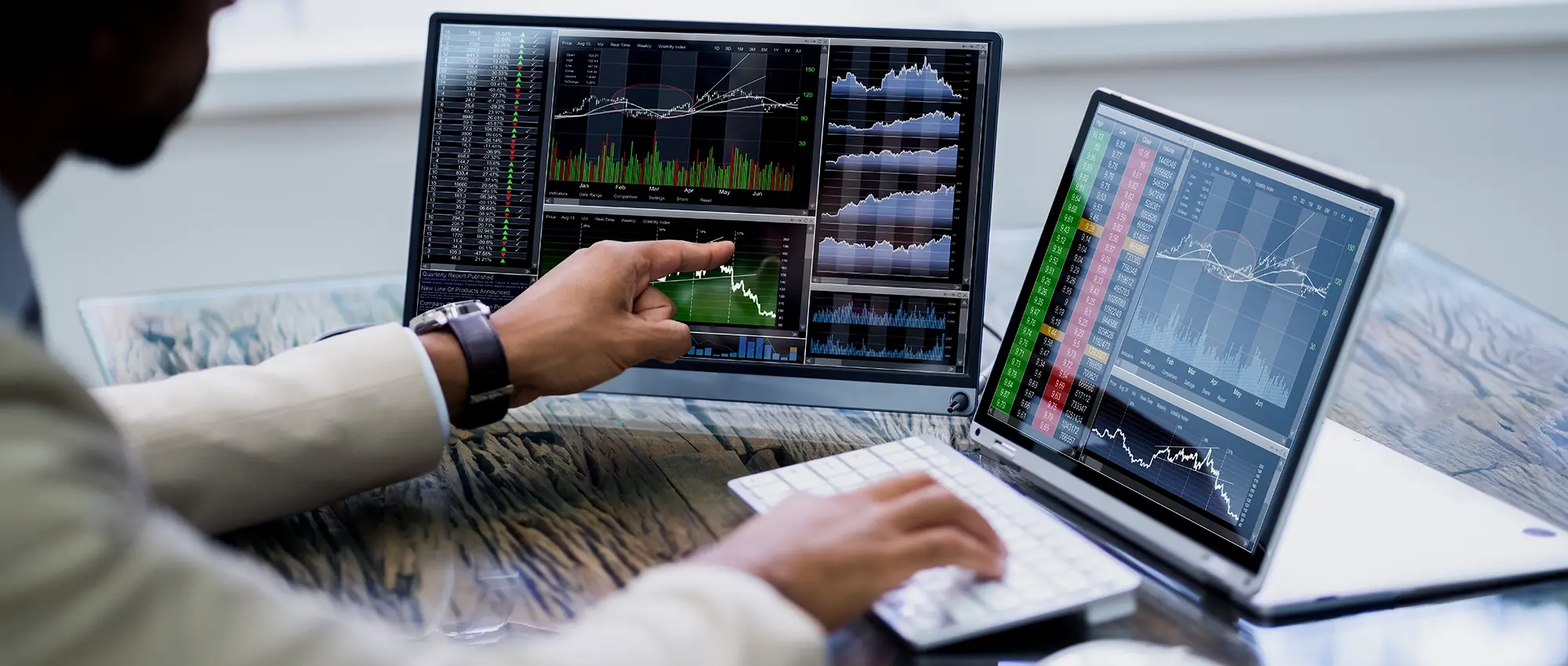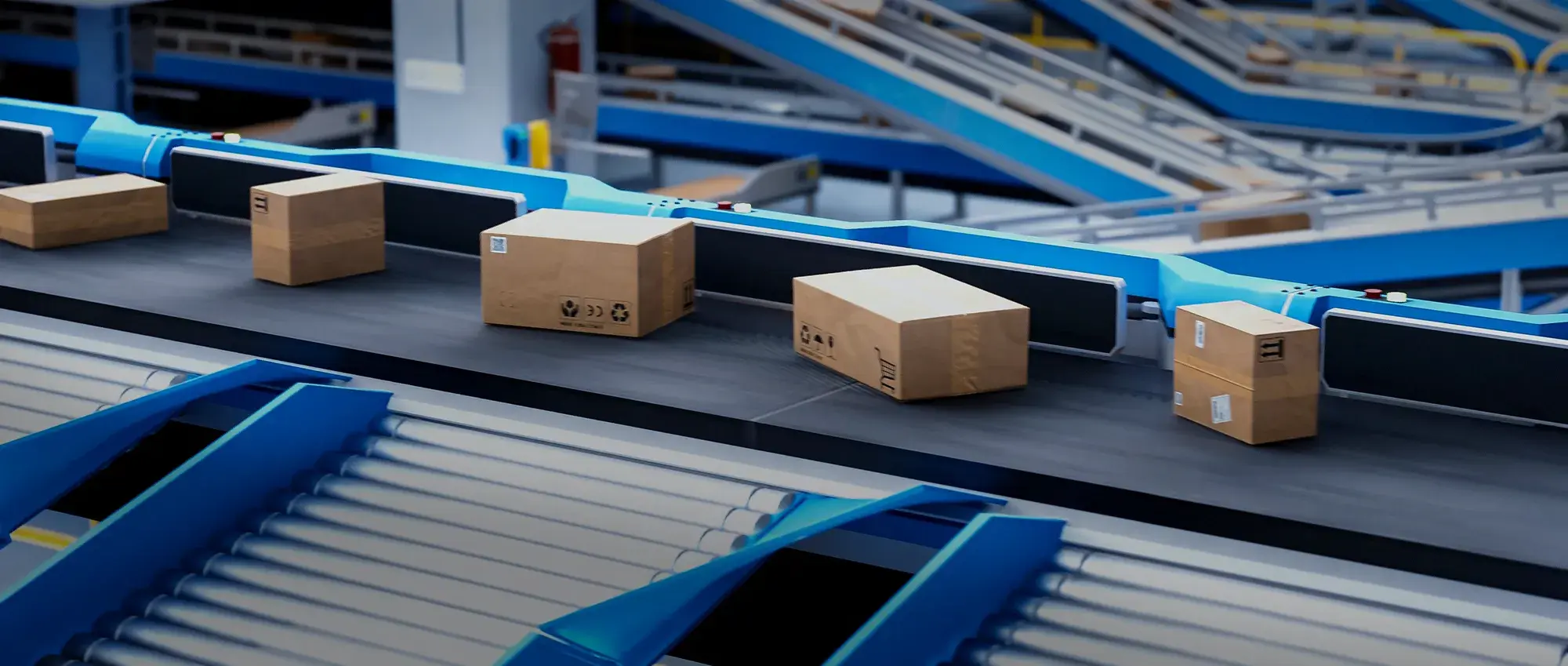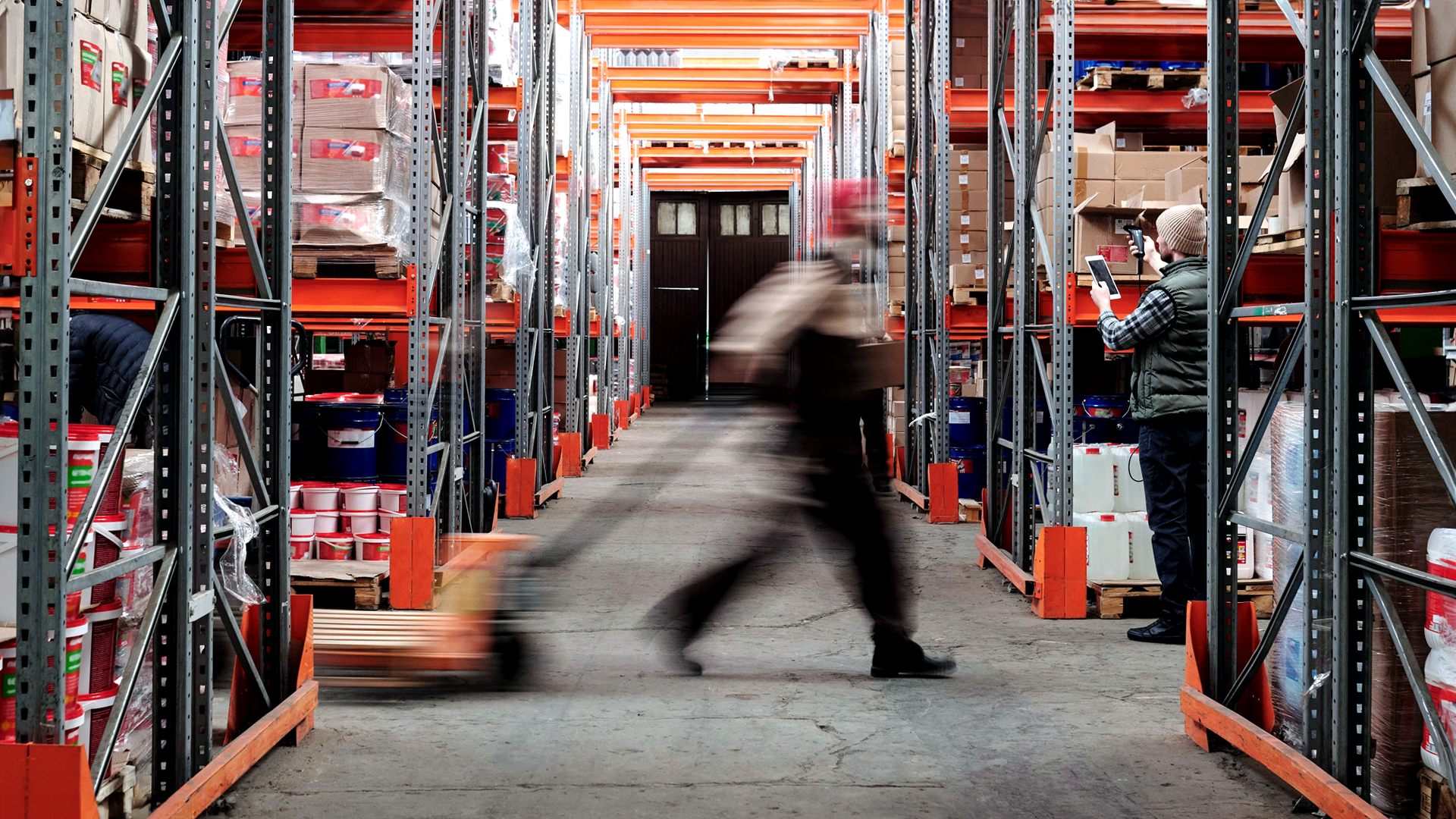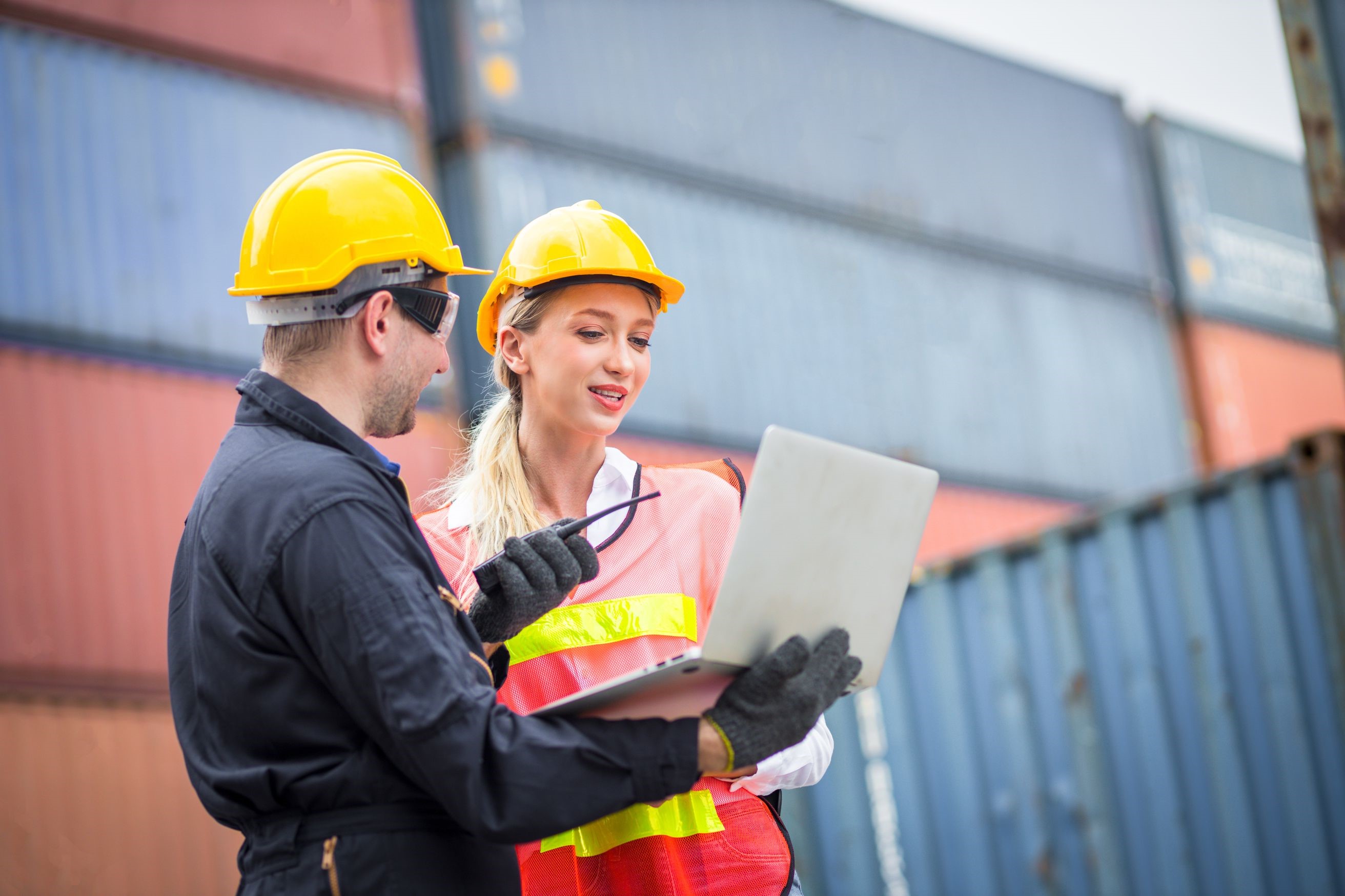Supply Chain Control Tower (SCCT)
Managing the supply chain is complex. Due to the number of people, processes and data involved, organisations need to improve visibility, control and decision-making. Supply chain control towers provide the visibility essential for organisations to navigate this complexity.

What is a supply chain control tower?
A supply chain control tower is a centralised, cloud-based solution that leverages advanced technologies to manage supply chains. It automatically collects and integrates data across a company's supply chain to provide real-time information and insights.
Supply chain control towers give managers and business leaders end-to-end visibility into the supply chain process – logistics, fulfilment, inventory management, delivery and more. The information is presented in a connected, personalised dashboard of data, key business metrics and events across the supply chain. This allows organisations to understand, prioritise and resolve critical issues in real time.
How a supply chain control tower works
Data is the lifeblood of supply control towers. Control towers collect, organise and analyse data from many sources, such as internal systems, partner networks and external sources. This data includes barcodes, remote sensors, weather and traffic data.
Once the data is centralised within the tower, the system can present it to decision-makers, stakeholders and business leaders to help them understand the status of the supply chain and improve their processes.
Decision-makers can use the data to drive what-if analysis and compare scenarios, run simulations of supply and demand changes, identify customer service issues, collaborate with partners and automate manual processes.
Supply chain control towers also use KPIs, including supplier performance, inventory levels, delivery tracking and other metrics, to automatically alert businesses to any supply chain disruptions or complications. Businesses use this information to find inefficiencies, identify potential risks and prioritise critical fixes. This contributes to a more streamlined supply chain, increased revenue and improved customer satisfaction.
Capabilities of a supply chain control tower
Organisations can benefit from these key capabilities of supply chain control towers:
- Real-time visibility: Supply chain control towers that use modern technologies such as IoT can track goods and materials and give detailed status updates for items moving through the supply chain, giving organisations end-to-end visibility.
- Data collection and analysis: Supply chain control towers can typically provide faster and more detailed reports through data collection. This data is compiled into a customisable dashboard to give decision-makers insights on performance, trends and potential risks to strengthen and improve operations.
- Collaboration: Control towers have collaborative spaces and resources to help stakeholders quickly resolve unexpected issues and improve operations.
- Planning and forecasting: Control towers use powerful scenario modelling to predict the impacts of changes in the supply chain. They can offer actionable suggestions, flag problem areas and offer prescriptive support to mitigate risks.
Moreover, supply chain control towers often have the following technology capabilities:
- Continuous intelligence to capture data continuously and in real-time
- Advanced analytics to move from being reactive to proactive
- Impact analysis to understand the impact of signals from the digital ecosystem on the company's supply chain
- Scenario modelling to simulate different scenarios to provide an intelligent response
- Collaborative response to connect and collaborate in the ecosystem
- AI to drive automation
Types of supply chain control towers
An organisation can leverage different supply chain control towers in other parts of the business: logistics and transportation, fulfilment, inventory, supply assurance and E2E.
Logistics and transportation control towers
Logistics and transportation control towers offer advance shipping notifications, delivery data and track-and-trace information, and visibility into inbound and outbound logistics. They are typically integrated with transportation management systems and can be customised with automatic alerts for specific issues, such as slowdowns, disruptions or shipment notifications.
Fulfilment control towers
Fulfilment control towers specialise in assisting package shipments and are designed to help expedite orders while reducing the overall cost-to-serve. The focus is on getting orders to customers quickly and accurately by assisting with shipment picking, packing and delivery. They can be integrated with ecommerce platforms to improve the ordering process and reduce the time between order placement and fulfilment.
Inventory control towers
Inventory control towers enable real-time insights into inventory management, with special emphasis on preventing stock-outs and shortages. They improve inventory visibility and help mitigate the risks of stock-outs and overstocks by maintaining real-time inventory data.
These control towers can also help track and maintain appropriate stock levels for perishable or temporary goods, reducing waste and unsold goods. Inventory control towers are often integrated with warehouse management systems to ensure optimised storage space and efficient inventory stocking and counting processes.
Supply assurance control towers
Supply assurance control towers ensure an adequate supply is available, more supply is planned for delivery, and other matters related to supply. They manage the flow of supplies and raw materials into the business.
These towers track supply levels and monitor supplier performance through measures that include on-time delivery and raw material quality. They can also reduce vulnerabilities during procurement by ensuring supplier continuity in the face of disruptions and ensuring the business has enough raw materials to continue production.
E2E supply chain control towers
E2E supply chain control towers are engineered to provide visibility across internal and external systems and processes, with applications for various departments or entities. They give business leaders detailed analyses and data throughout the supply chain by pulling from internal and external data sources, leveraging AI and other modern technologies and integrating existing platforms, such as an ERP system.
How Supply Chain Control Tower Unlock New Level of Resilience
Benefits of supply chain control towers
When effectively implemented, supply chain control towers can transform a business's supply chain operations and reduce costs, increase productivity and maintain higher standards for customers.
Here are some benefits of using supply chain control towers:
- Agility and flexibility: Control towers can facilitate a more flexible supply chain by quickly alerting decision-makers to obstructions, delays or external pressures that can disrupt processes. This gives businesses more time to shift operations, keeping operations running smoothly and maintaining supply continuity.
- Centralised data: Internal teams and external business partners have access to a single source of information that keeps everyone on the same page. Stakeholders can collaborate on well-informed decisions and ensure everyone understands what, why and how plans will be implemented.
- Digital playbooks: Digital playbooks are best practices and standardised procedures that create a roadmap for managing the supply chain. They often include historical context for issues, previously attempted strategies and other institutional knowledge that helps managers compound successes and avoid repeating past failures.
- Insights and recommendations: Through scenario analysis, organisations can see how potential changes or external factors will impact the supply chain. Because control towers can access robust data, their suggestions can be more insightful and detailed. AI can also enhance recommendations, allowing business leaders to simulate situations, quickly find relevant information and identify root causes to prioritise risk management.
- Optimum inventory levels: Supply chain control towers provide visibility into inventory, so companies have what they need, where they need it and when they need it. They increase inventory turnover and profits and reduce inventory holdings stock-outs and material shortages.
Supply chain control tower use cases
Supply chain control towers have a wide range of use cases across industries, from equipment monitoring in healthcare to ecommerce order fulfilment.
Here are a few examples of how they are used to optimise operations, control turnover and manage inventory.
Healthcare
Hospitals lose as much as 10% of inventory value due to lost or misplaced items. They can use supply chain control towers to protect inventory investments, increase efficiencies and improve patient care by ensuring you have the critical lifesaving equipment and supplies you need at the right place and time.
Grocery
Grocers can use supply chain control towers to manage overwhelming demand and ensure the availability of goods by monitoring and mitigating an ever-increasing range of potential disruptions. They can keep shelves stocked with expanded inventory visibility to see beyond warehouses, including in-store locations and supplies in transit.
Industrial
Industrial organisations can use supply chain control towers to meet service contract SLAs while minimising inventory. They get visibility into service parts by SKU and stocking locations across ERP and other systems to help ensure that critical parts are in stock to meet customer expectations.
Ecommerce
Ecommerce companies can use supply chain control towers to improve the ordering process for customers and decrease the time between order placement and fulfilment. This helps improve customer satisfaction and creates a more efficient ordering process.
As supply chain control towers have evolved, they’ve broken down functional silos to allow organisations to connect to their entire supply network. As such, supply chain consulting can be helpful to many organisations. This enables organisations with greater supply chain visibility, collaboration and optimization.
Further reading
Check out these resources to learn more about Supply Chain Control Tower and its role in people-centric innovation.




